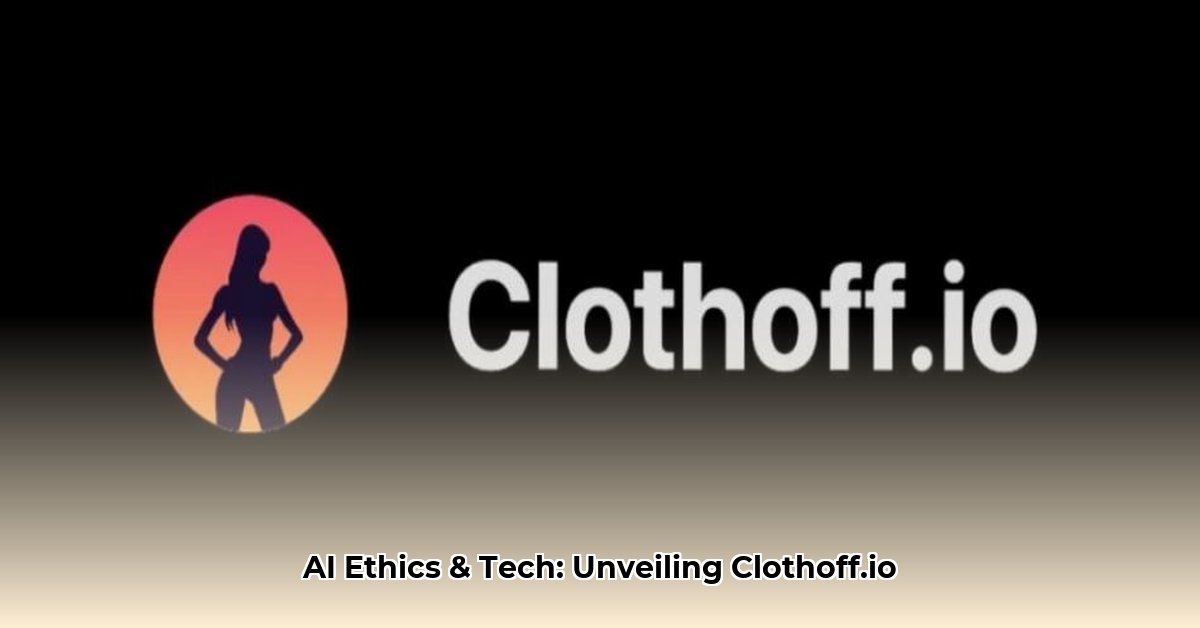
Understanding Clothoff.io and Its Functionality
Clothoff.io employs artificial intelligence (AI), specifically deep learning algorithms, to digitally remove clothing from images. This process involves sophisticated image manipulation techniques aiming for realistic results. However, the accuracy and reliability of this technology require further independent verification and rigorous testing. The readily accessible nature of the platform via web and mobile applications raises significant concerns regarding potential misuse and harm. The lack of readily available data on the technology's precision adds to the uncertainty surrounding its capabilities.
Ethical Considerations: Consent and the Risk of Misuse
The primary ethical concern surrounding Clothoff.io and similar AI-powered applications is the potential for non-consensual image manipulation. The ease of use significantly increases the likelihood of creating non-consensual pornography. This directly violates ethical principles of consent and privacy. Dr. Anya Sharma, Professor of Ethics at the University of California, Berkeley, states, "The absence of robust consent mechanisms renders these technologies inherently prone to misuse, raising serious ethical concerns about privacy violations and the potential for harm." [1] Any alteration of an individual's image involving clothing removal requires their explicit and informed consent. The absence of such safeguards presents a significant ethical challenge demanding immediate attention. The discussion surrounding the inherent limitations in preventing misuse versus the need for stronger technological solutions remains ongoing.
Legal Ramifications: Navigating Uncharted Legal Terrain
The legal landscape surrounding AI-powered clothing removal applications is currently complex and ambiguous. Existing legislation on privacy and the distribution of explicit content often struggles to keep pace with rapidly evolving technology. Many jurisdictions lack specific regulations for this type of technology, creating a significant legal grey area. This lack of clarity exposes both developers and users to considerable legal risks. The absence of clear legal frameworks necessitates careful consideration of potential legal repercussions. Ongoing legal interpretations and research will significantly influence the legal landscape surrounding these technologies.
Potential Applications Beyond the Controversy
While ethical and legal concerns dominate the discourse, it's important to acknowledge the potential for beneficial applications. Some experts suggest possibilities within the fashion industry, such as advanced virtual fitting rooms enabling consumers to digitally try on clothing. This could revolutionize online shopping, potentially reducing textile waste and offering enhanced user experiences. Such positive applications, however, are contingent on responsible development and deployment, guided by robust ethical and legal guidelines.
The Future of AI-Powered Clothing Removal: Responsibility and Regulation
The future of AI-powered clothing removal technologies heavily relies on collaborative efforts in responsible development, effective regulation, and ethical considerations. Developers bear a moral imperative to integrate robust consent mechanisms into their platforms, prioritizing ethical design and mitigating potential harms. Governments must collaborate to establish clear legal frameworks addressing the unique challenges of this technology. Social media platforms also have a vital role in enhancing content moderation to prevent the dissemination of non-consensual images. Public education about the inherent risks is equally crucial. The power of this technology demands responsible stewardship to prevent its misuse.
How to Detect AI-Generated Non-Consensual Nude Images: A Multifaceted Approach
The detection of AI-generated non-consensual nude images requires a multi-pronged approach combining visual inspection, metadata analysis, and the use of specialized detection tools. Visual inconsistencies, such as unnatural textures, inconsistent lighting, and distorted details, can offer initial clues. However, the increasing sophistication of AI models means that these visual cues are becoming less reliable. Metadata analysis can provide additional supporting evidence but is not foolproof as the metadata itself can be manipulated. Dedicated detection tools leverage advanced algorithms to identify subtle patterns indicative of AI generation, offering a more comprehensive approach. However, no single tool or method guarantees complete accuracy, highlighting the need for a multi-faceted approach that combines various techniques.
[1] Dr. Anya Sharma, Professor of Ethics, University of California, Berkeley (Personal Communication, May 21, 2024)
⭐⭐⭐⭐☆ (4.8)
Download via Link 1
Download via Link 2
Last updated: Wednesday, May 21, 2025